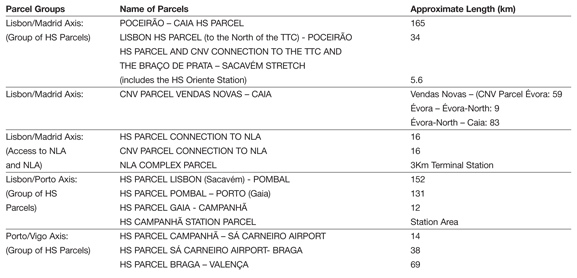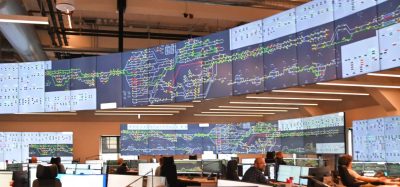Implementing signalling & telecommunications through a PPP
Posted: 26 September 2009 | | No comments yet
The de-grouping from the value chain which underlies the proposed business model for the high-speed network (HSN) project in Portugal led to a single international public tender request in the form of a PPP (public-private partnership), under the name of ‘HSN Signalling and Telecommunication Concession (HSN S&T Concession)’. The aim of this concession is to contract, within a public works concession, the design, installation, maintenance and provision of the S&T systems for the HSN project over a period of 20 years. The model selected is thought to be the most favourable for the development of this project as it allows performance and the guarantee of compliance with deadlines to be combined with reduced risk but with quality of service and competitiveness.
The de-grouping from the value chain which underlies the proposed business model for the high-speed network (HSN) project in Portugal led to a single international public tender request in the form of a PPP (public-private partnership), under the name of ‘HSN Signalling and Telecommunication Concession (HSN S&T Concession)'. The aim of this concession is to contract, within a public works concession, the design, installation, maintenance and provision of the S&T systems for the HSN project over a period of 20 years. The model selected is thought to be the most favourable for the development of this project as it allows performance and the guarantee of compliance with deadlines to be combined with reduced risk but with quality of service and competitiveness.
The de-grouping from the value chain which underlies the proposed business model for the high-speed network (HSN) project in Portugal led to a single international public tender request in the form of a PPP (public-private partnership), under the name of ‘HSN Signalling and Telecommunication Concession (HSN S&T Concession)’. The aim of this concession is to contract, within a public works concession, the design, installation, maintenance and provision of the S&T systems for the HSN project over a period of 20 years. The model selected is thought to be the most favourable for the development of this project as it allows performance and the guarantee of compliance with deadlines to be combined with reduced risk but with quality of service and competitiveness.
Structuring within the business model
The HSN project business model was defined and publically presented in June 2007 and seeks to develop three high-speed (HS) rail axes systems (Lisbon/Madrid, Lisbon/Porto and Porto/Vigo), considered as priority projects by the Portuguese government. This model is based on five PPPs for the design, construction, funding and maintenance of the rail substructure and superstructure and a single PPP for the S&T systems, which will cover the three HS rail axes. Circulation management and allocation of capacity will be the responsibility of REFER E.P.E., the company responsible for rail infrastructure management in Portugal.
The public contracting process for the HSN project started on 2 June 2008, with the launching of the tender request for the Poceirão-Caia stretch (PPP1) and continued with the tender request of 30 March 2009 for the Lisbon-Poceirão stretch (PPP2), which includes the Third Tagus Crossing (TTC), stretches which are an integral part of the Lisbon-Madrid axis.
With the tender requests for the construction of the infrastructure underway, it became necessary to ensure the contracting of the S&T systems to guarantee the complete development of the HSN project.
The de-grouping from the chain of value underlying the HSN project and corresponding separation of the S&T systems from the main rail infrastructure was undertaken for the following reasons:
Reduced number of S&T system suppliers
The inclusion of S&T in the main rail infrastructure would significantly limit the number of consortiums in each of the tender requests for the infrastructure PPP, with a negative impact on competition.
Perceived technological risk by financing entities
The S&T systems, which represent just a small part of the overall investment in the HSN project (approximately 5%) are seen by financing entities as representing greater risk (technological risk) when compared to the main infrastructure. The separation of S&T sought to reduce the perceived risk while also providing already demonstrated clear financial benefits.
Compatibility of timelines and execution projects
The proposed business model will include mechanisms which allow the contracting of S&T systems to be segmented and deferred in relation to the contracting of the other infrastructure PPPs, thus reducing risk and facilitating the remaining projects.
Working life of equipment
The working life of S&T equipment (20 years for the main rail equipment) is significantly lower than that of the other HSN project components, and as such, required contracts of differing duration.
Guaranteed competition
A separate contract for S&T systems will increase competition (in both components: investment and maintenance) among the different S&T suppliers. It will be a contract of ‘some size’ and thus ensure interest from the private sector.
Reduced risk and lower interface costs
A single, standard technology for the HSN S&T will allow the number of interfaces to be reduced, as well as lowering the respective risks and costs.
Possibility of segmenting community funds
It may be possible to maximise community funding and the specific funds available for this type of system.
The business model to be employed for the S&T systems took into account their technical complexity and is completely innovative. An in-depth analysis of the factors considered critical for success was also required. This analysis included a comparison between the two main alternatives: the traditional model based on contracts for the provision of services and the PPP model. The latter model was seen as being more beneficial for the project as it allows performance and the guarantee of compliance with deadlines to be combined with reduced risk but with quality of service and competitiveness.
A single PPP will reduce exposure to risk and increase efficiency. It is also important to note that with investment and maintenance being combined in a 20-year concession, lower overheads will be possible, as will gains in terms of economy of scale. There will also be a guarantee of greater efficiency, innovation and technical optimisation, through the increased competition which has characterised PPP projects.
Geographical de-grouping
The scope of the HSN S&T concession in geographical terms is based on the breakdown and definition of stretches of lines (parcels and interchangeable groups of parcels, of conditioned and staged execution) in line with the implementation schedule of the five infrastructure PPPs, which will allow the contracting of S&T Systems to be segmented and deferred, avoiding or reducing the consequences of possible changes and/or delays in HSN project timelines. Without prejudice to the above, also considered in the definition of the geographical scope were the interface relationships and respective sharing of risks. From a technical point of view, also taken into consideration were the particularities of HSN operation and the command/control requirements of the entire rail network and respective integration into the National Rail Network (RFN) Operational Control Centres (CCO).
In total, the HSN S&T Concession corresponds to around 640km of HS network and 172km of conventional (CNV) network, which is broken down into four Parcel Groups and 14 Parcels.
The availability model
Of note in this section is the innovative mechanism proposed for performance payments for the future concession holder, which will also be broken down into parcels or groups of parcels. This mechanism allows the setting up of sufficient financial incentives to ensure suitable performance with regard to the availability and maintenance of the S&T systems in line with particular and specific performance objectives for each axis of the HSN project.
With this business model, the remuneration of the future concession holder will be based on the level of initial investment during the Development Period and on performance payments during the Availability Period.
Payments will be made for the Development Period for each parcel or groups of parcels, which correspond to 80% to 90% (depending on the parcel group) of the investment, with the remaining 10% to 20% paid during the guarantee period. This payment will depend on the availability and the correct installation and operation of S&T systems. This model eliminates the need for the concession holder to contract high levels of financing and reduce the use of own funds and will depend exclusively on the strategy adopted by the concession holder.
During the Availability Period, payments will be made as will deductions relating to performance, which are an integral part of the performance system which has been designed to stimulate the concession holder into providing suitable performance with regard to the availability of S&T systems for the operation of the HS rail network.
The Financial Model also requires a performance bond to be issued in the name of the conceding authority. The value of the performance bond will be in line with the norms defined in legislation for Portuguesa Public Contracting.
The HSN S&T Concession Availability Model establishes a direct link between the performance of the rail system and performance remuneration due to the concession holder, calculated using the following formula:
RCt = RDt – Dt
Where:
- RCt Remuneration during the Availability Period in year t
- RDt Performance Remuneration in year t;
- Dt Performance Deductions to be applied to the concession holder in year t;
Dt = Dd + Cd
Where:
- Dd deductions applied to the concession holder due to unavailability of the S&T system caused by technical failures which limit operations
- Cd deductions applied to the concession holder due to poor maintenance leading to deterioration of equipment and loss of functions but which do not limit operations
This model is based on the performance of S&T systems and aims to promote efficient management and maximised availability. The model also seeks to ensure good levels of maintenance of all other equipment which does not directly affect the availability of the infrastructure. Performance is thus remunerated accordingly.
This approach will stimulate the organisation and planning of maintenance and monitoring programmes as well as promoting the rapid resolution of all failures and consequent reduction in availability. Further aims seek to avoid the deterioration of S&T1 equipment while also motivating the concession holder into collaborating in the operation of the HSN project as a whole and not just with regard to S&T systems.
The technical aim
The S&T systems to be supplied within the HSN S&T concession are considered as being an integrated network of signalling and telecommunications systems and other subsystems relating to safety. The aim of these systems is to ensure the command, control and supervision of the entire rail system in an efficient, reliable and safe manner. These systems complement the rail substructure and superstructure of the HSN project, and they consist of:
A. Control-Command and Signalling Systems (CCS)
- Signalling, consisting of electronic blocking, train detection equipment, the signalling and control and management of circulation
- The ERTMS/ETCS subsystem
- The ERTMS/GSM-R3 subsystem
- Systems for diagnosis, recording of data and maintenance support.
B. The Telecommunications Systems
- The rail telecommunications systems which include systems which are expressly dedicated to rail operation
- The communications networks which support the S&T system and other systems and applications
- General systems and operations support systems:
- Control of Catenaries and Traction Energy
- Technical Supervision of Infrastructures
- Public Address
- Video surveillance (CCTV)
C. Complementary safety systems which include detectors for: fallen objects, hot wheels and transmission axles, vertical impacts (and dynamic weighing), derailed axles, weather stations and systems to detect side winds, etc.
D. The Operations Control Centre and respective auxiliary mechanisms for the operation of the rail system through the control and supervision of all S&T systems, including interface with REFER E.P.E.
E. The interface between infrastructure S&T systems and the systems on board rolling stock (ETCS and GSM-R radio equipment)
F. The specific energy systems for S&T Systems
Of note within these requirements is the implementation of the ERTMS system which includes the ETCS and GSM-R subsystems as well as the respective specific interfaces with the CCS systems, which also correspond to a European objective covered by community legislation. The model proposed by RAVE meets this legislation, the timeline objectives for implementation and interoperability requirements.
The CCS systems to be installed in the HS Parcels, within the scope of essential requirements, will allow level 24 operation of ERTMS / ETCS as the main operating system and the management of movement in stations through simplified lights signalling in stations and technical installations.
For the CNV Parcels, also considered in addition to level 1 ERTMS/ETCS operation is the need to install lateral lights and fixed signalling for the conventional component.
This technical definition for HS and CNV lines envisions the full integration of the Portuguese rail network with the trans-European HS system, particularly with regard to harmonised operation and operations within Iberia. It also ensures interoperability for different RFN operators as well as harmonising on a national level (Intraoperability) the infrastructure with rolling stock in compliance with the national plan for ERTMS/ETCS migration while also guaranteeing articulation between the new HS structure and the already existing conventional network.
The HSN S&T concession will also play a decisive role in accelerating the migration of CCS systems from the remaining RFN, allowing REFER to acquire extensive technical and economic competences for this process.


Table 1: Description of parcels / groups of parcels


Table 2: Availability objectives / operational requirements
References
- Resulting from occurrences of reduction of availability capable of causing a block and/or speed restriction
- Values based on levels of operation of S&T systems which correspond to trains using the entire rail line, for any possible itinerary, at the respective maximum speed and capacity of the line, on both tracks, during the normal Operation Period (24 hours less the contractually agreed periods for carrying out maintenance)
- The installation of the GSM-R/GPRS network in HS lines will only be along part of these lines to the respective national network and will be carried out through the installation of BSS (Base Station Subsystem) components which will be connected to the central equipment structure common to the HS and conventional networks
- The objective version for the CCS subsystems is the 3.0.0. baseline
Issue
Related topics
Global System for Mobile Communications – Railway (GSM-R), Signalling, Control & Communications







